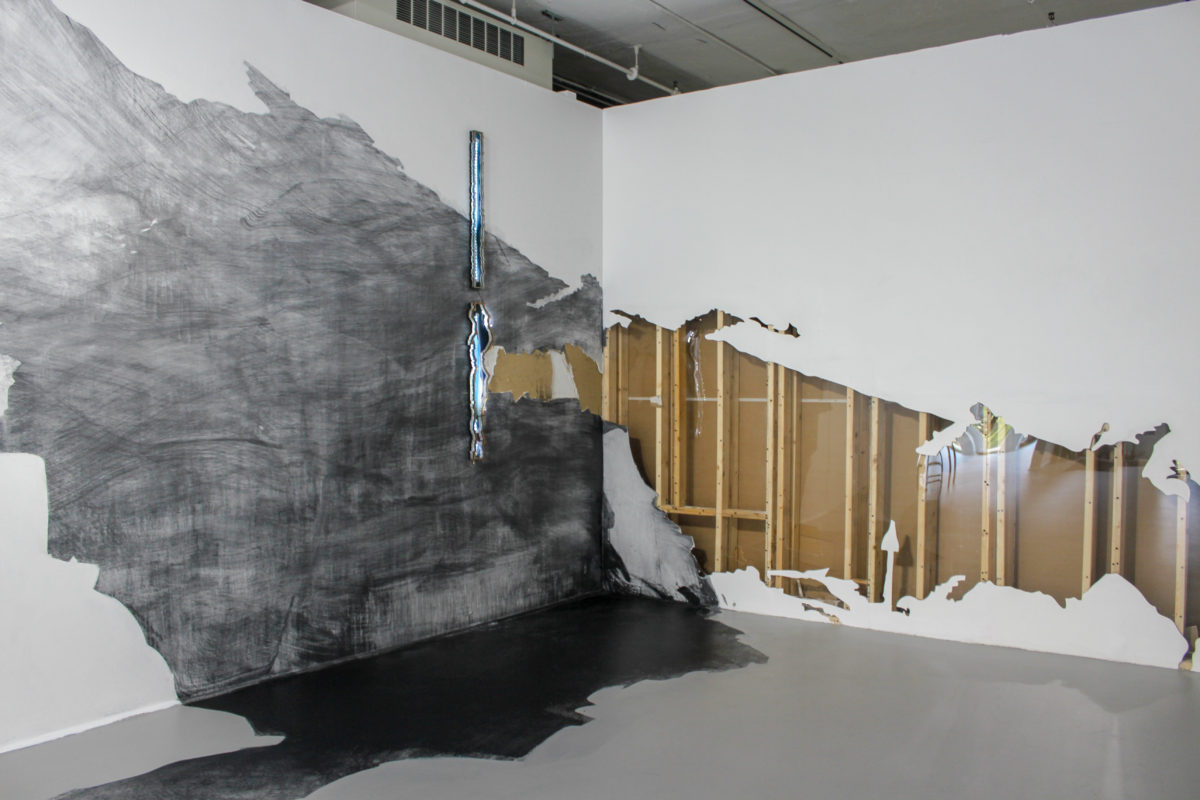
“In the Words, In the Bones,” at the Mills Gallery through July 21, delves into questions of origin and ancestry through the lens of three artists with global roots, Marina Leybishkis (Hungary), Nyugen E. Smith (Haiti and Trinidad and Tobago) and Zsuzsanna Varga-Szegedi (Uzbekistan). Though deriving from dramatically different cultures, the artists embark on a similar search for connection and reconciliation with their cultural patrimony.
The exhibition opens with Smith’s “Spirit Carrier” series. The floating sculptures made with found materials emulate the crowns worn by Yoruba chiefs in West Africa. Smith’s “Carriers” are meant to care for the spirit of a deceased person, in this case, victims of police brutality. In this way Smith weaves bits of his cultural heritage into his contemporary experience as a person of color.
In another series, “Masta My Language,” Smith explores a cultural disconnect. Having never learned Haitian Creole, the artist felt separated from his Caribbean heritage. He wrote a poem in English about this separation and then cut each letter into rubber, forming a physical poem one can hold in one’s hands. With the remaining negative space around the letters, he created his own abstract alphabet.
 William Reese has interpreted the collages Smith made in this system of language into saxophone music. Viewers can observe the abstract sheet music while listening to the resulting compositions. In the center of these installations sits the rubber poem in a bowl on a pedestal. It begs audiences to consider the acquisition of knowledge and the power in whose language is spoken.
William Reese has interpreted the collages Smith made in this system of language into saxophone music. Viewers can observe the abstract sheet music while listening to the resulting compositions. In the center of these installations sits the rubber poem in a bowl on a pedestal. It begs audiences to consider the acquisition of knowledge and the power in whose language is spoken.
Further into the exhibition is Leybishkis’ row of digitally burned family photographs shared with the artist by distant relatives. Here, she explores the unknowability of ancestry. These figures are as foreign to Leybishkis as to the viewer, and many additional family members were relegated to unknown deaths and unmarked graves in the Gulag. Because of the black, burned quality of the images, the subjects look more like ghosts in a horror film than smiling faces from a family album. The artist wonders what the ties are to family members she’s never met. How does one claim a history one is so detached from?
Each of these artists has roots in countries ridden with genocide, colonialism and political turmoil. These circumstances further complicate their own connection with their ancestors and their heritage. What bonds them together is their desire to find a space in the burned, battered family tree.
Read the full article in The Bay State Banner.